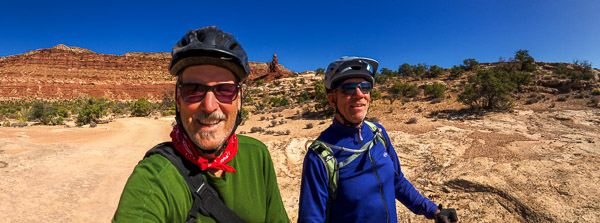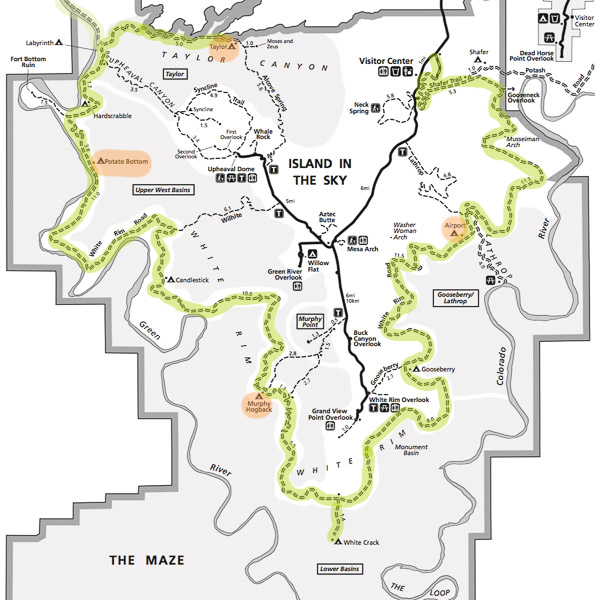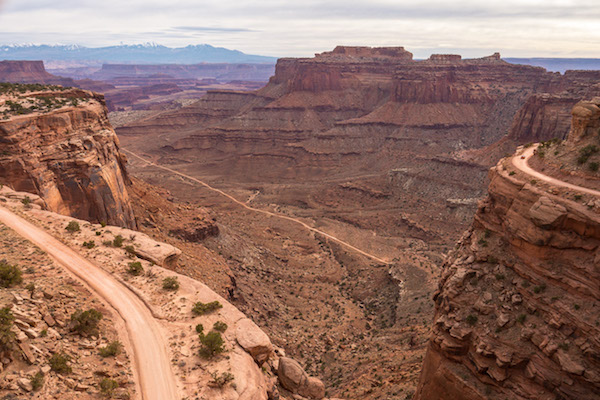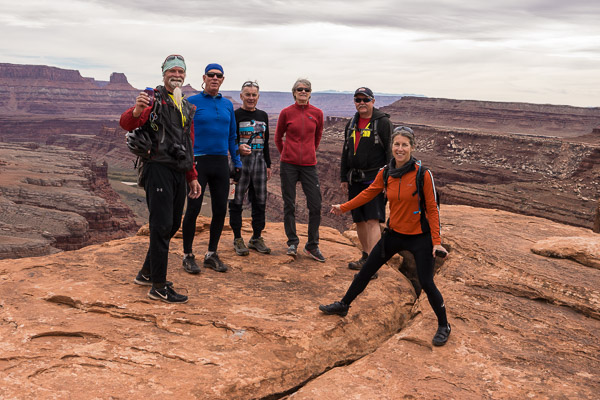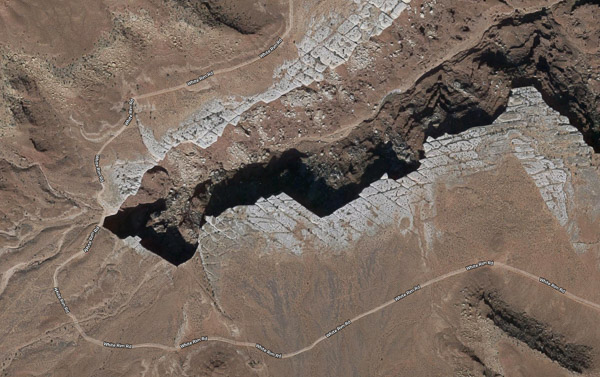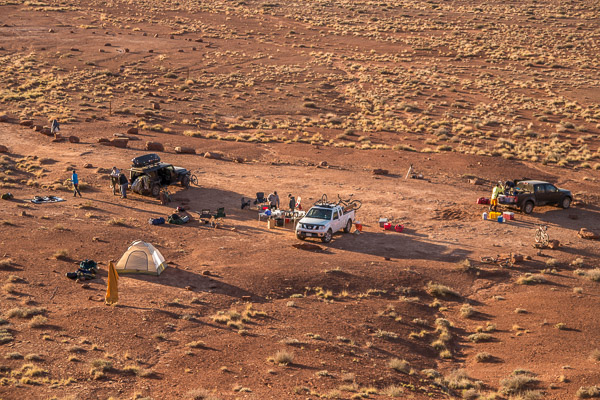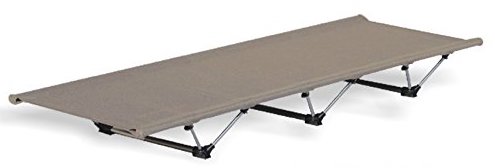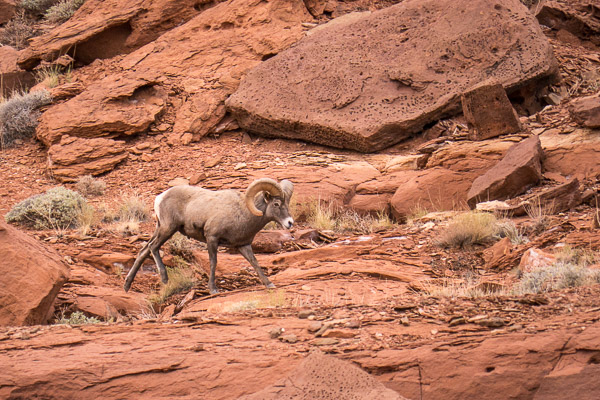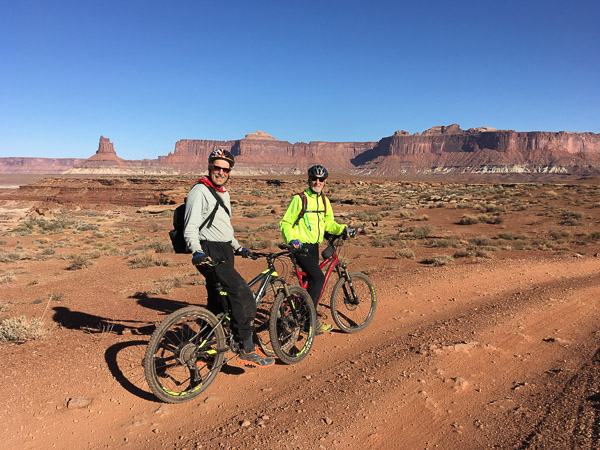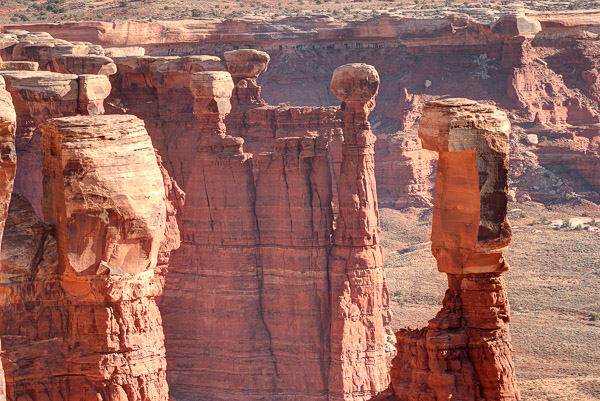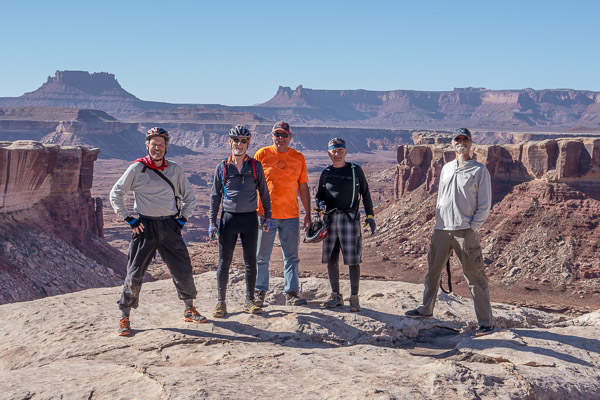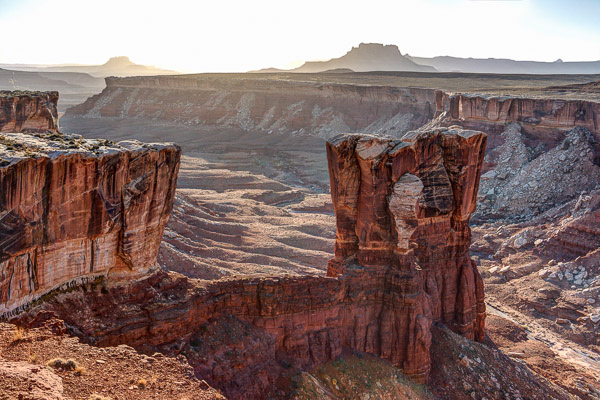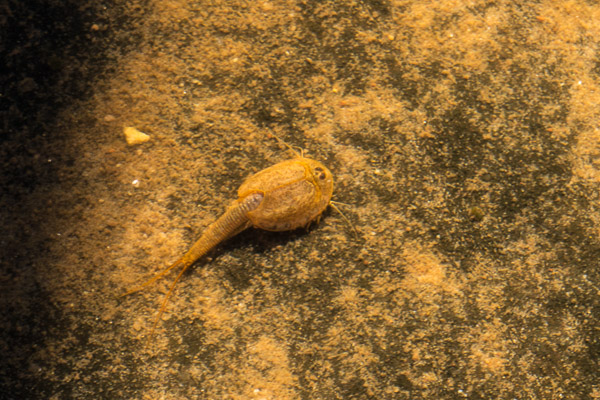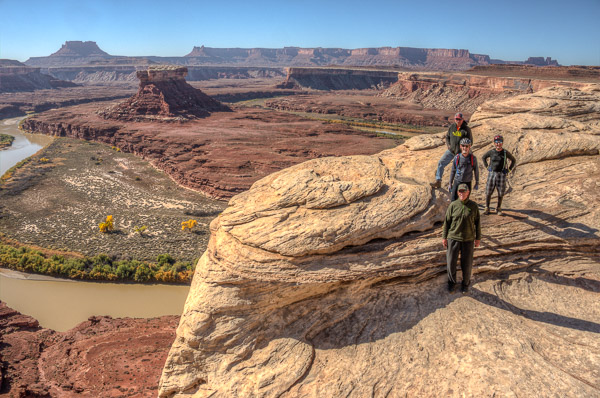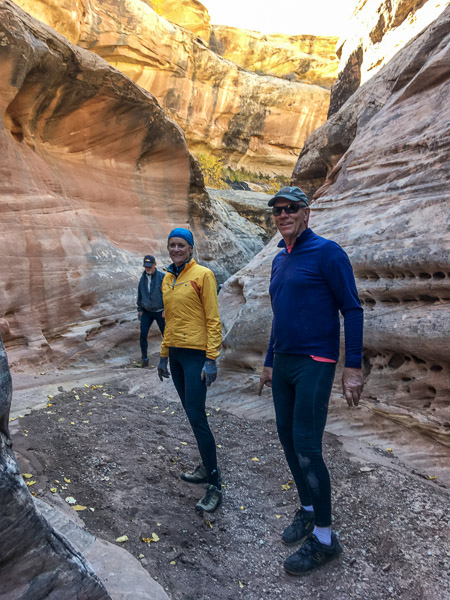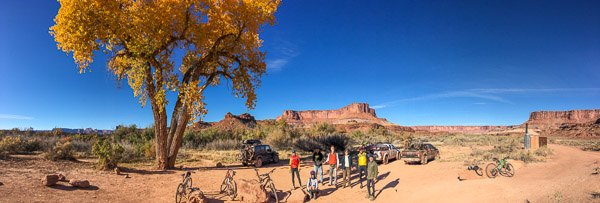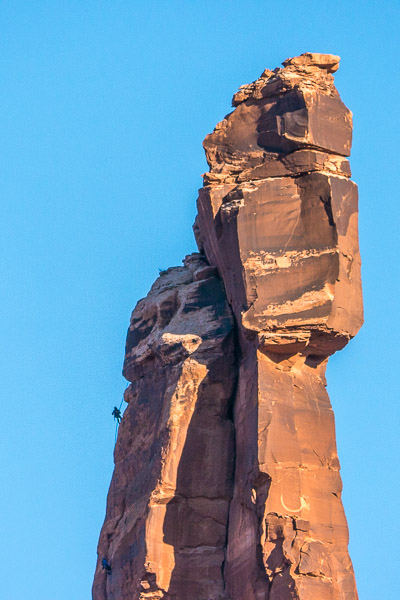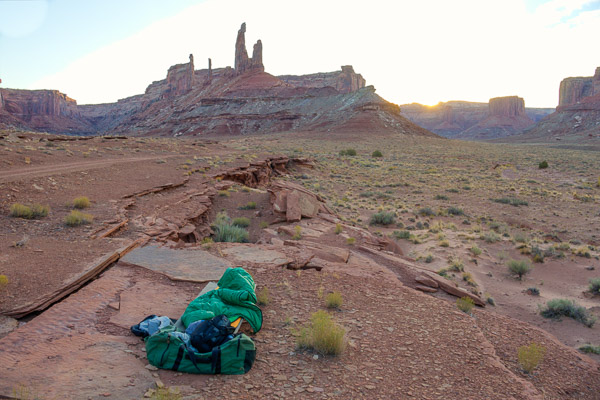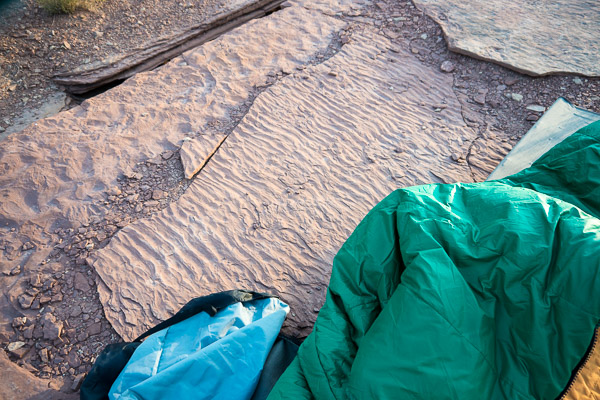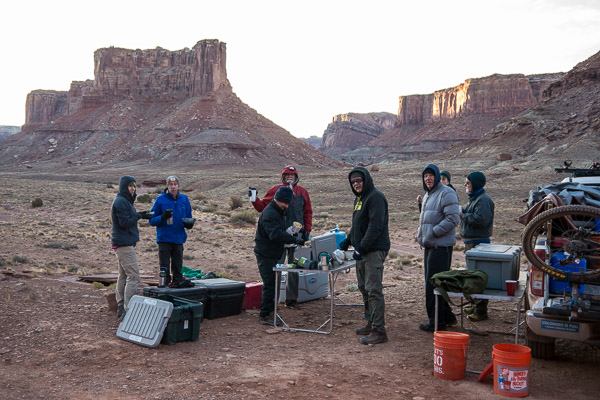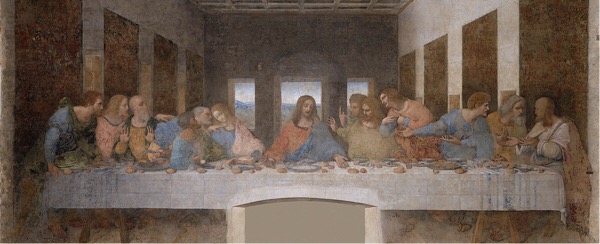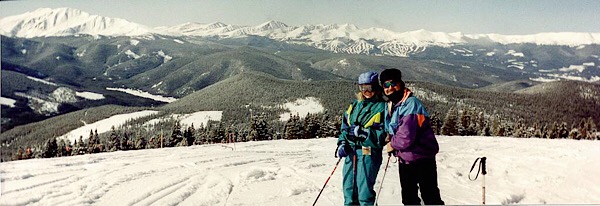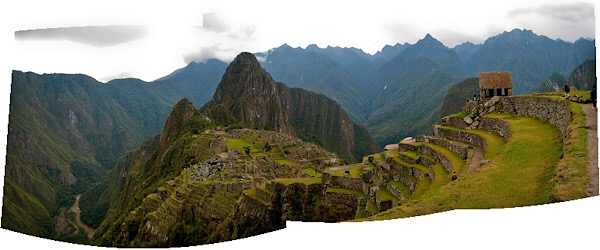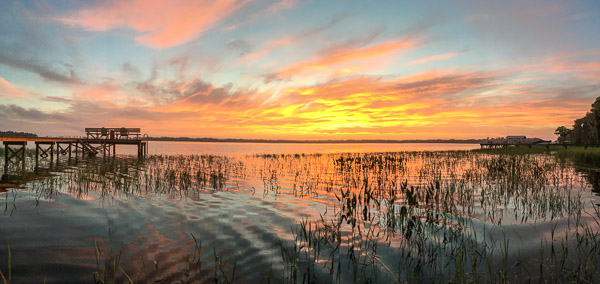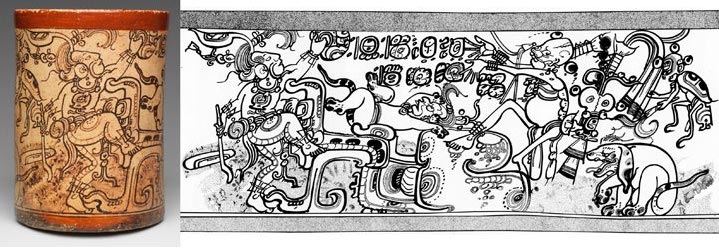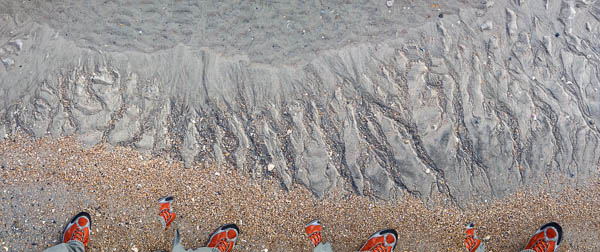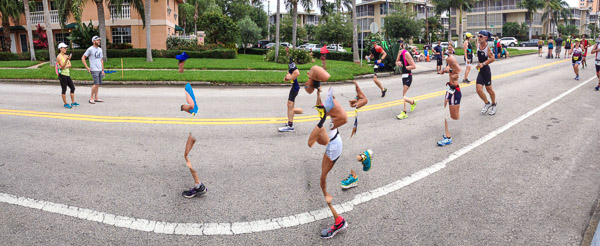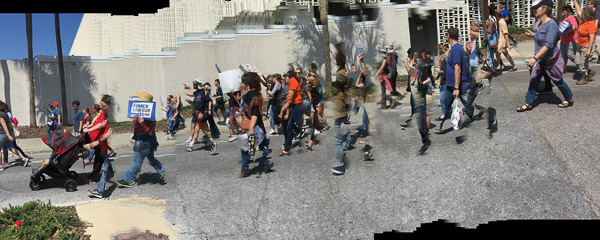It would be hard to top our 4WD/bike trip to the White Rim in Canyonlands National Park last year, but entering the isolated subunit called The Maze was a strong contender! [Gallery]
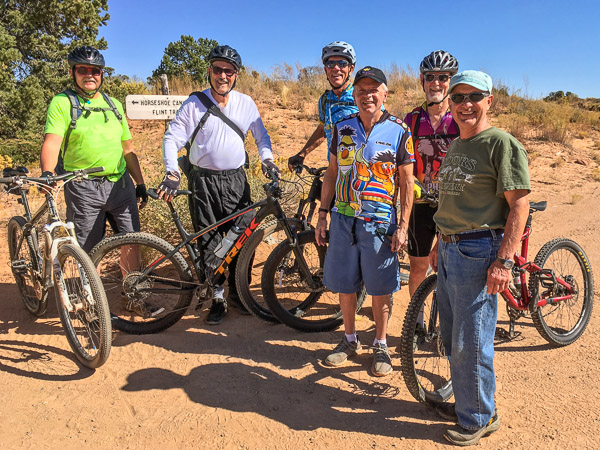
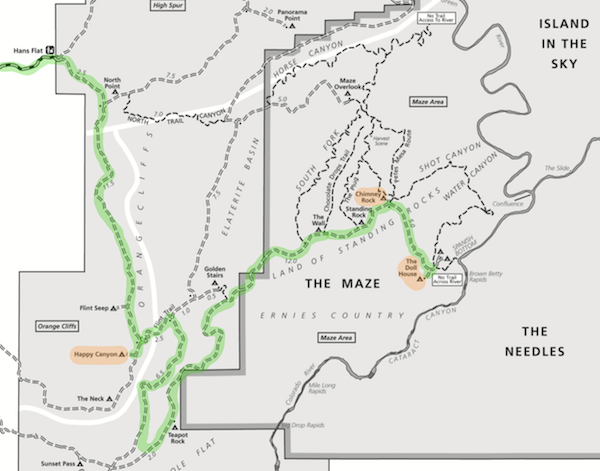
This was not a loop trail, but a very challenging, out-and-back trek to the edge of the Colorado River Canyon. We spent most of the first day just getting to the trailhead on the extreme western edge of the park and establishing our first camp at Happy Canyon. I pitched my hammock between a juniper and a pinyon pine and was rocked to sleep by the wind all night.
The riding got serious the next day going down the face of the Orange Cliffs on the Flint Trail.
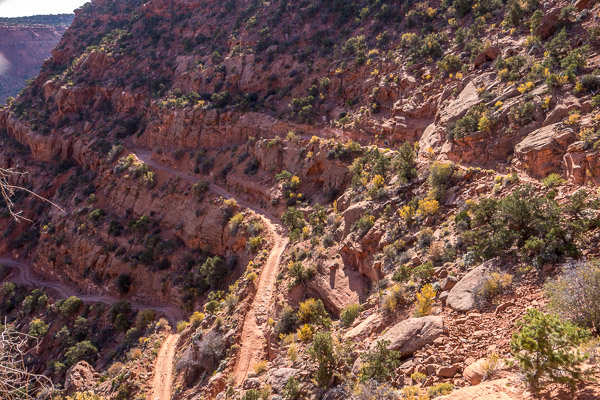
It was very steep and difficult even for the vehicles. I did a lot of walking. Things only got worse the rest of the day with loose rocks, sand and drop-offs. We met a county employee with a huge 6WD Grader who was actually maintaining the road (“every seven years whether it needs it our not”). When we told him where we were headed he laughed and said “We haven’t been back there in thirty years!”
The area around Teapot Rock was especially challenging, requiring spotters and backing up around impossible corners. Late in the day we finally made it to the Land of Standing Rocks, a windswept plain punctuated by fantastic rock formations receding into the distance. It was magical!
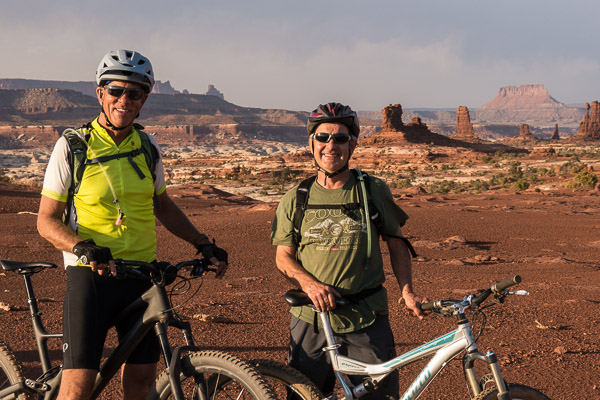
We camped about an hour before dusk at Chimney Rock. It was cold and windy but we made the best of it with G&Ts and hot food prepared in a Dutch Oven by Glen.
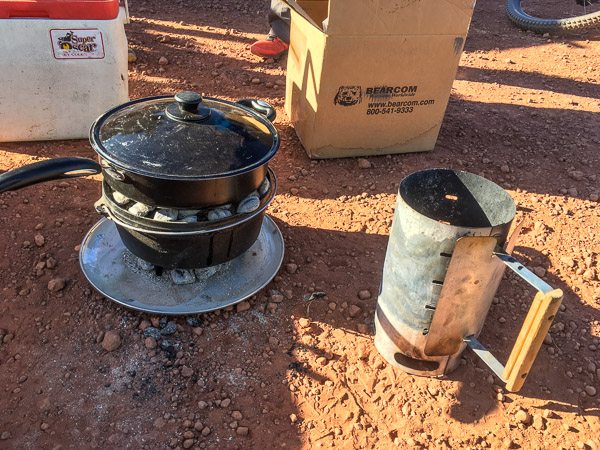
The next day we went for a long, meandering hike following the canyon rim.
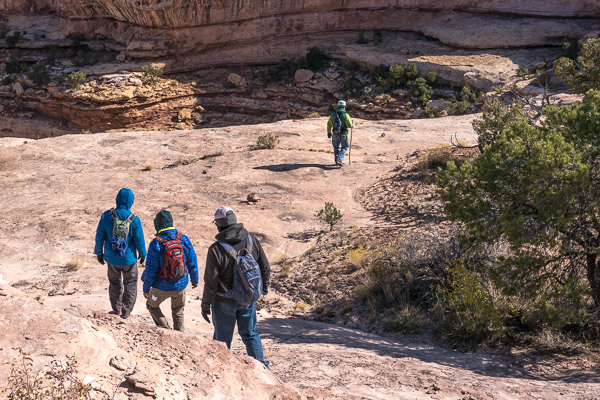
We saw many strange and beautiful things including odd box-work erosion patterns in the stone. They looked like apartment complexes for tiny people!
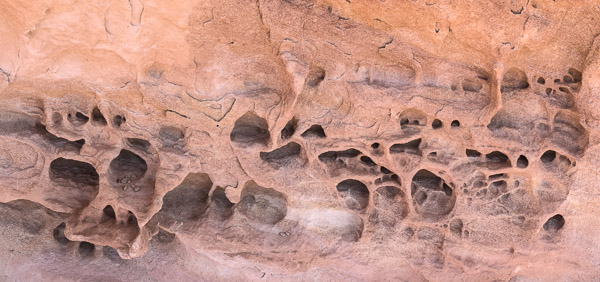
On our return to camp we relaxed with a caprese salad, beer, & G&Ts before a multi-course dinner. Hard to beat! That night it got down in the 20s but fortunately the wind died down.
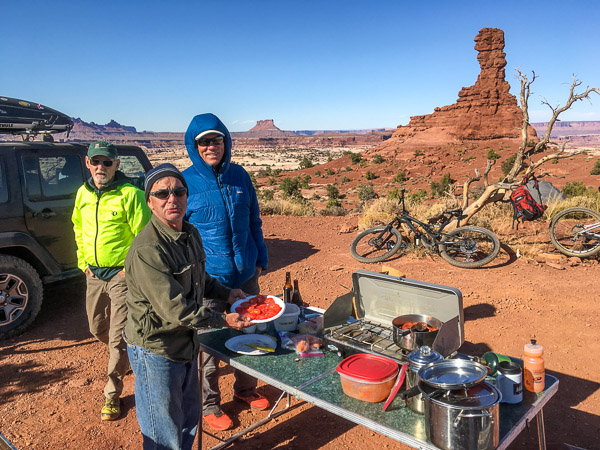
The next day we headed down the relatively easy road to The Doll House. Along the way we met at pair of hikers who had crossed the Colorado River from Spanish Bottom in Inflatable Kayaks (!) that they had in their packs! They planned to hike upriver and paddle back to their car on the other side. Amazing!
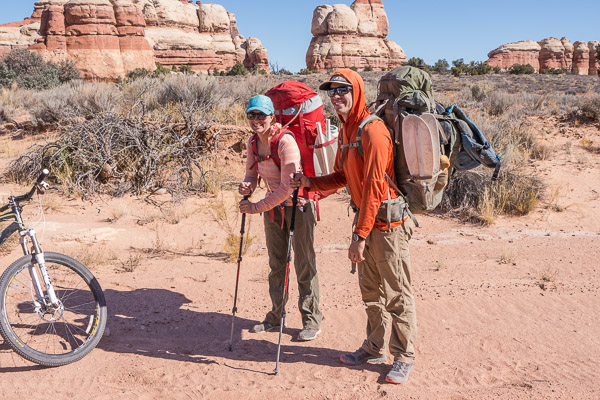
The Doll House is an area of huge striped rock towers with little doll-like figurines on top. The formation is an extension of The Needles region immediately across the river.

We camped at site #3 on the opposite side with spectacular views!
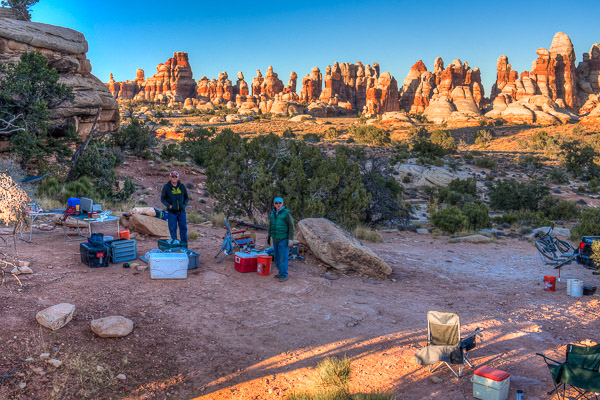
I found a perfect place to hang my hammock between a boulder and an old juniper tree. Room with a View indeed!
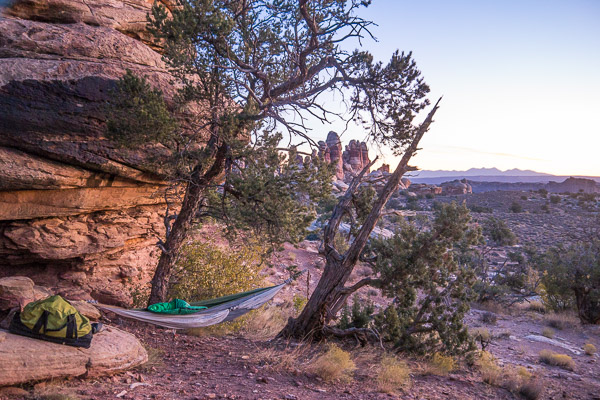
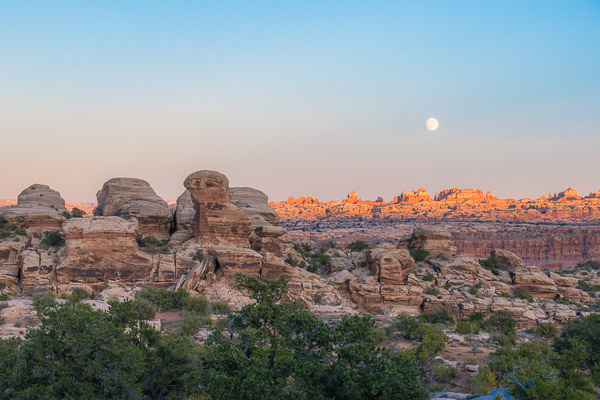
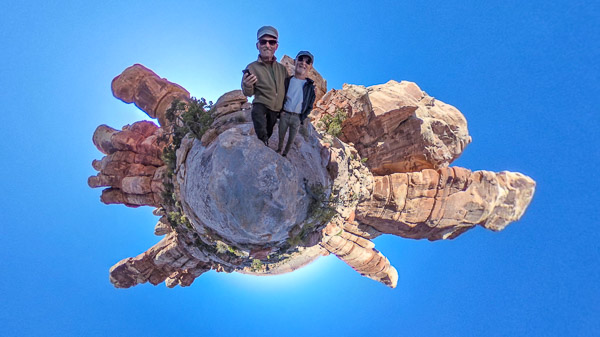
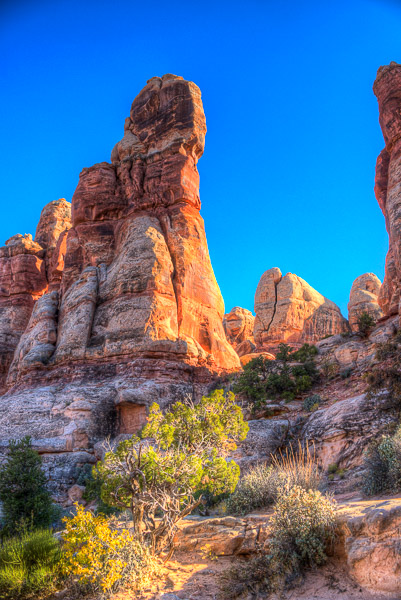
On the fifth day, alas, we had to turn homeward. I had a great time cycling several miles with Jeff as we retraced our route. We did not climb back up the Flint Trail however, exiting near the tiny town of Hite on the extreme upper end of Lake Powell. It was a spectacular trip!
